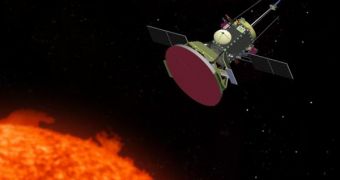Well, sending a probe into the Sun wouldn't do much good would it, considering that the spacecraft will be totally destroyed by the dreaded heat radiating from the star? However, the Solar Probe will be the closest spacecraft ever sent to the Sun and its orbit will eventually pass through the star's outer atmosphere, stretching as much as 8 to 10 solar radii away from the center of the Sun. This means it will come at least eight times closer to the Sun than any previous probe.
The Solar Probe mission will be conducted under the supervision of NASA, is set to be launched by 2015 and has a budget of 750 million US dollars. The spacecraft is set to follow an orbit that will take it around the Sun and the planet Venus. With the help of Venus' powerful gravitational field the Solar Probe will be slingshot closer and closer to the Sun, until it will reach the outer corona. The Helios spacecraft for example, set the previous record for the closest probe to the Sun in the 1970s when it came to only 67 solar radii from the surface.
"Solar Probe is going to be our first visit to our mother star. The quality of the data that we hope to gather at such a close distance to the Sun is unprecedented", said the mission's deputy project scientist at Johns Hopkins University's Applied Physics Laboratory, Manolis Georgoulis.
The proposal to build a spacecraft that would come so close to the Sun actually came in 1958, but until now NASA didn't have the appropriate budget to build the heat shield for such a probe. The Solar Probe will have a 15 centimeter thick carbon-composite heat shield shaped into a disc-like structure. It is somehow similar to that of the MESSENGER spacecraft, which is expected to enter in Mercury's orbit by 2011.
It will be able to withstand a temperature of 1400 degrees Celsius, so that the protected equipment would only experience a room temperature. "It's not your run-of-the-mill spacecraft. The whole spacecraft is optimally designed to dissipate heat", says Andrew Dantzler, Solar Probe project manager. All the instruments will be placed behind the shield and none of them will ever be pointing towards the Sun since such actions are not required in the corona. "It's sort of like if you're sampling the atmosphere here on Earth - you don't need to point at a particular direction", he said.

 14 DAY TRIAL //
14 DAY TRIAL //